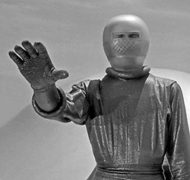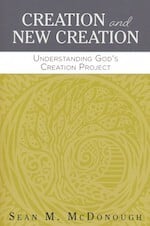Why Are Movie Christ-Figures Significant?
Blog / Produced by The High Calling
When the original Superman: The Movie came out in 1978, I was a middle-schooler beside himself with anticipation. I drew my own movie posters and hung them up around the school. My love for comic books was being vindicated by a major Hollywood production starring Marlon Brando.
It was only years later, as a new-born Christian, that I saw all the references to Jesus Christ in the movie. An all-wise father sends his one and only son to earth to be the people’s savior. Jor-El explains to Superman what his mission will be: “They can be a great people, Kal-El, they wish to be. They only lack the light to show the way. For this reason above all, their capacity for good, I have sent them you, my only son.”
With the release of Man of Steel in June, Christians were excited to see the “Christ Figure” re-emerge in a major cultural artifact. Why? Many were acting like I did back in middle school: their love for Christianity was being “vindicated” by a major Hollywood production (instead of Marlon Brando, we now get Russell Crowe!).
Do we really need vindication from Hollywood? I don't think so. But perhaps we can help others see Christ in the stories that Hollywood produces. My friend Craig Detweiler (who blogs as “Doc Hollywood” at Patheos, teaches courses on film and entertainment at Pepperdine, and from whom I had the pleasure of taking the doctoral course “Theology of Pop Culture” at Fuller Seminary) was recruited to write sermon Notes for ManofSteelResources.com.
Do Christ Figures in movies inform the movie-goer about who Jesus is, or is it the other way around? Perhaps the movie-goer is being informed about the character in the movie because of that character’s similarities to Christ.
Craig Detweiler says that today—like the Israelites who were instructed by God through Jeremiah while they were in “exile” in Babylon—Christians who interact with “Hollywood Babylon” must “seek the shalom (welfare, flourishing, peace) of the city where I have sent you into exile, and pray to the LORD on its behalf, for in its shalom you will find your shalom” (Jeremiah 29:7).
In a post at Out of Ur (“Superman, Sermon Notes from Exile: Why I wrote sermon notes for a blockbuster Hollywood film”), Craig wrote,
“As an interpreter of dreams, perhaps Daniel serves as the most apt example for working in Hollywood, our (inter)national dream factory. Filmmakers ask an unknown god to inspire them. The muse may be box office receipts, an Oscar, or Art. The best movie directors serve the truth of the characters. Like Nebuchadnezzar, they may not realize what their onscreen dreams mean. So when I am invited to interpret their dreams, I welcome the opportunity…
“…When I find a filmmaker asking all the right questions, I make an effort to come alongside that spiritual search. As Philip came alongside the Ethiopian Eunuch, we can ask people, ‘Do you understand what you're reading (or creating)?’ Our attention (and ticket buying) encourages studios to create even more spiritually informed sagas.”
When writers of books and screenplays, some purposefully and others without realizing it, create a character who reflects the incredible story of Jesus Christ, they do so because it moves the human heart. Think about how these stories make you feel: A person with powers beyond our own who comes to bring goodness to the world. Someone sacrifices himself for the salvation of others. Someone dies but comes back from the dead. The story of Christ is informing the character. What Craig Detweiler is advocating is that we help people see how and why Christ informs a character. This is different than seeking to understand the true story of Jesus Christ from the depiction of the character. That is backward—and only causes confusion.
Josh Larsen co-hosts my favorite weekly film-lovers’ podcast, Filmspotting. Josh wrote a very insightful piece at Think Christian entitled, “Man of Steel and the tiredness of Christ figures.” In it, he makes this point:
“It seems to me that the practice of identifying Christ figures almost always brings more to the movies at hand than it does to our understanding of Christ. It adds religiosity and resonance (even if neither are intended), yet rarely informs our faith. As a theological exercise, Christ-figuring is a one-way street.”
By the way, in episode 450 (June 28, 2013) of Filmspotting, Josh and guest reviewer Michael Phillips had a countdown of their “Top 5 Movie Christ Figures.” Here were Josh’s top five Christ Figures:
5. Selma in “Dancer in the Dark”
4. Klaatu in “The Day the Earth Stood Still”
3. Babette in “Babette’s Feast"
2. Simon in “Simon of the Desert”
1. Iron Giant in “The Iron Giant”
In the podcast, he also mentioned Superman, E.T., Harry Potter, Gandalf, and Paul Newman’s character in “Cool Hand Luke.”
I think Cool Hand Luke is an amazing film, a tragic story with clear Christ Figure images. These images inform the watcher about what Luke’s role is in the film, thus bringing a depth to the story that makes it come alive. But to say the character of "Cool Hand” Luke is a model of Jesus Christ that can be used evangelistically would be a terrible mistake! This is a one-way street for sure.

Image of Klaatu by James Vaughan. Used with permission. Sourced via Flickr.
Post by Bob Robinson, Faith Editor for The High Calling and the Executive Director of The Center to Reintegrate Faith, Life, and Vocations. Follow Reintegrate's tweets at @re_integrate and Bob's personal twitter at @Bob_Robinson_re





